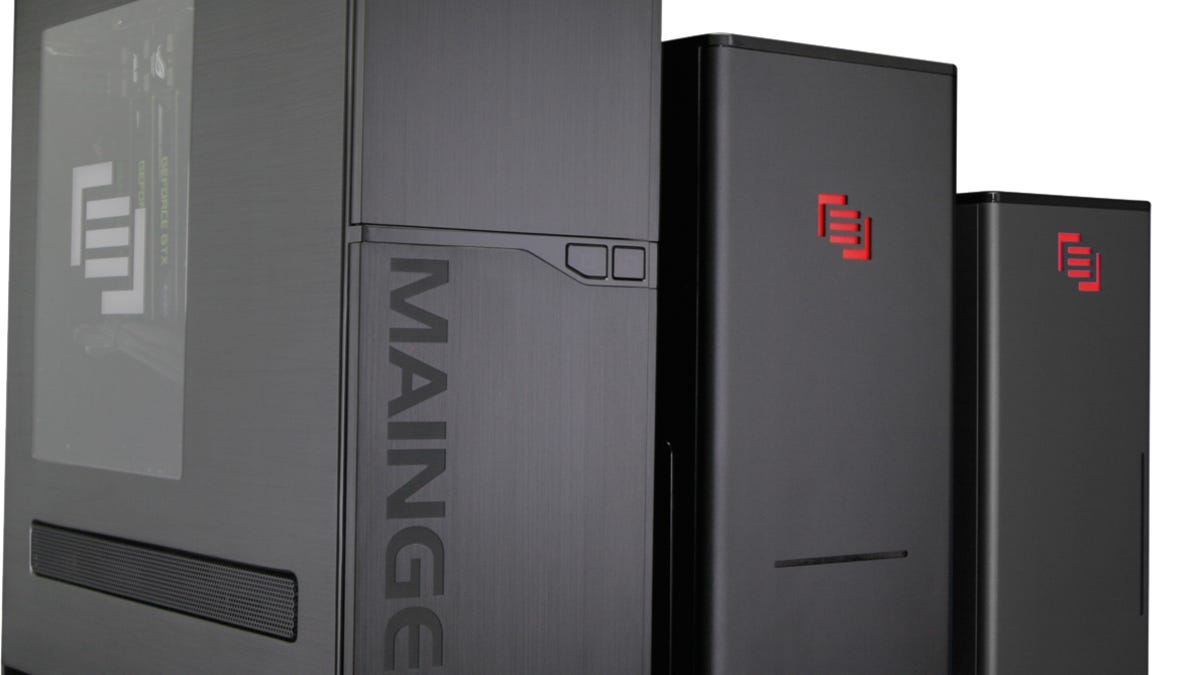New Maingear gaming desktops bring design distinction
Now this is how you roll out a family of gaming desktops.
Yes, Maingear has added Intel's new Ivy Bridge third-generation Core CPUs to its desktop lineup. So will all other PC vendors if they haven't already. Click here for a list of Ivy Bridge systems currently on sale.
Far more interesting is that with its new case designs, also announced today, Maingear is demonstrating it understands the power of an easy-to-understand product lineup.
Joining Maingear's existing full-tower Shift gaming desktop are a new version of the standard-tower F131, and the new Potenza, which is smaller. The F131 has existed in name for a few years, but both it and the Potenza now come in vertically oriented case designs.
Not only do those designs have technical merits -- the narrowed chassis channels hot air up and out of the system for efficient cooling -- the size difference between them also makes it immediately clear where each model fits in the performance spectrum.
The minimum starting prices are close for each system, ranging between $900 and $1,400 for the most affordable base model. As you dig into the respective configurator for each PC, you'll see the Potenza can only accept a single graphics card, the F131 will take two, and the Shift will support up to four.
Maingear's new lineup isn't foolproof. The dual-card-capable Vybe, which I've liked in the past, occupies a confusing middle ground between the F131 and the Potenza. The Vybe's standard midtower chassis also has different design language.
Still, the new Maingear systems show a too-scarce appreciation for the benefits of product-line simplicity. Acer, HP, and Lenovo would all be wise to heed this example.


